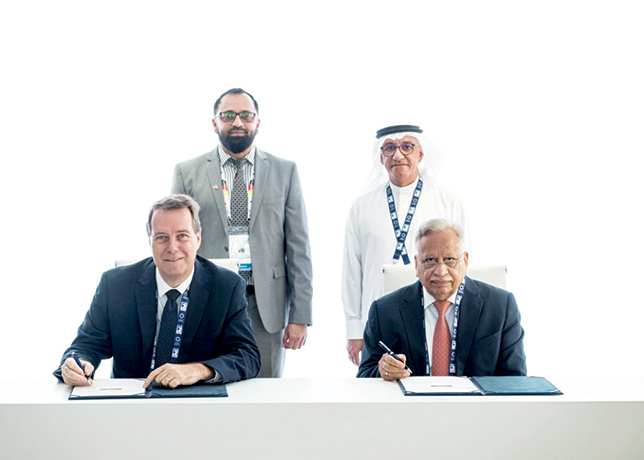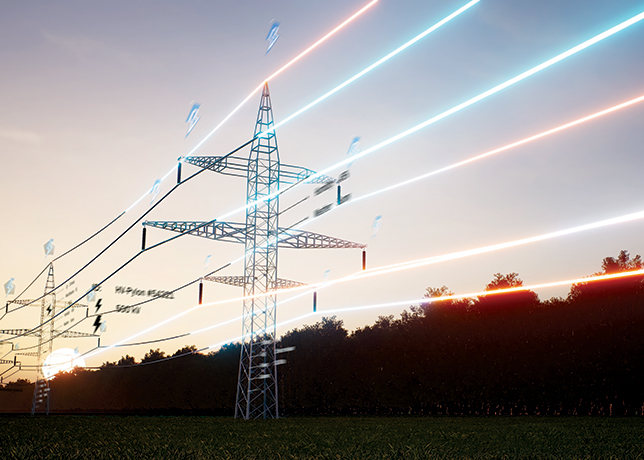
 Alkhorayef at the Saudi Made pavilion at Hannover Messe in Germany
Alkhorayef at the Saudi Made pavilion at Hannover Messe in Germany
As Saudi-made goods gain recognition for quality, innovation, and authenticity, they may command premium pricing and capture market share from competitors
Through vigorous promotion efforts both domestically and internationally, Saudi Arabia is sparing no effort to propel the the ‘Made in Saudi’ programme onto the global stage.
The ‘SAUDI MADE’ logo serves as a visible representation of the programme, embodying its objectives and principles.
Last month, Bandar Al-Khorayef, Minister of Industry and Mineral Resources and Chairman of the Board of Directors of the Saudi Export Development Authority (Saudi Exports), personally inaugurated the ‘Saudi Made’ pavilion at the Hannover Messe 2024 event in Hannover, Germany.
Locally, the ‘Made in Saudi’ Expo saw its second edition last year in October. The event in Riyadh facilitated more than 120 companies and 61 agreements, including export and localisation agreements worth more than SR1 billion ($270 million). This was a considerable increase over the 22 deals signed in the event’s first edition in 2021.
The Made in Saudi initiative, part of the National Industrial Development and Logistics Program, aims to stimulate national industries, promote local goods, and boost exports globally.
Launched by the Saudi Export Development Authority in 2021, it builds a unified industrial brand, offering opportunities for businesses to expand domestically and internationally.
The programme enhances visibility for local businesses, connecting them with wider audiences.
Through the programme, businesses are able to collaborate and use the Saudi Made logo to project a positive image of the country around the world.
By celebrating homegrown talent and innovation, the Made in Saudi programme drives economic growth and positions Saudi products as preferred choices globally, as outlined in Vision 2030.
With a goal to increase non-oil exports to 50 per cent of non-oil GDP by 2030, the programme fosters collaboration among businesses, projecting a positive image of Saudi Arabia worldwide.
Participation in initiatives like Made in Saudi often involves collaboration among businesses, government agencies, and other stakeholders. These partnerships can lead to the formation of networks that facilitate knowledge sharing, resource pooling, and joint ventures.
The Made in Saudi programme has support from all public entities in the country. For instance, Saudi Post and Saudi Export Development Authority have agreed to promote the ‘Made in Saudi’ brand across various channels locally and internationally.
Separately, the programme can have implications beyond its initial scope, leading to spin-offs, such as the ‘Saudi Technology’ label.
The new label is geared towards advancing technological goods, bolstering their representation in international markets, and enhancing the standing of domestic companies and their offerings both locally and globally.
It fosters the growth of Saudi technology firms by urging them to augment their value and expand into new markets.
THE KINGDOM IS ATTRACTING THE WORLD
Since the launch of Vision 2030, Saudi Arabia has made significant progress, leveraging its substantial oil wealth to fulfill its commitments.
Notably, the country's oil revenues have significantly bolstered its international investment standing, surging by $150 billion between the first quarter of 2021 and the first quarter of 2023 alone.
In 2021, Saudi Arabia initiated the National Investment Strategy (NIS), aiming to reshape its economy by fostering innovation, offering incentives to bolster private sector engagement, and providing targeted assistance to key industries.
According to analysts at Goldman Sachs, approximately $1 trillion, forming part of the overall estimated NIS investments totaling $3.3 trillion, is projected to be allocated by the end of the decade for initial investments across six specific sectors. These sectors encompass clean technology, metals and mining, as well as transport and logistics, among others.
By 2030, the nation intends to undertake "mega projects" valued at $870 billion, including the ambitious NEOM project.
Goldman Sachs has highlighted six sectors experiencing increased investment, anticipated to propel a "capex supercycle" until the decade's end. Thes are clean tech, metals and mining, transportation and logistics, digital transformation, upstream energy, and downstream energy.
In clean technology, Saudi Arabia is targeting the addition of nearly 60 gigawatts (GW) of renewable energy capacity and 2 to 3 GW of nuclear energy capacity by 2030. Moreover, the country aims to boost production of clean hydrogen and electric vehicles, with an estimated total investment of $206 billion.
The metals and mining sector is poised for growth following the introduction of a new mining investment law in 2021.
The significant embrace of EVs has led to a surge in demand for lithium in the region, especially in the UAE and Saudi Arabia.
These nations are ramping up the production of lithium batteries and EVs through substantial investments.
An important development is the efforts by the Saudi-based mining company Ma’aden to expand its pilot facilities for extracting lithium from seawater using membrane-based technology. Ma’aden's endeavours in this regard could play a pivotal role in meeting the growing demand for lithium in Saudi Arabia's EV market.
In January, Saudi Arabia revised upwards estimates for its untapped mineral resources including phosphate, gold and rare earths to $2.5 trillion, from a 2016 forecast of $1.3 trillion.
In transportation and logistics, Saudi Arabia seeks to establish itself as a leading travel and shipping hub.
Recent initiatives include the launch of updated strategies for national transport and logistics, along with plans for expanding the King Salman International Airport, with a total estimated investment of $150 billion.
The digital transformation sector is another focus area, with telecommunications providers leading the charge. Investments in network capacity, particularly in 5G and fiber-to-the-home expansions, are expected to reach a total of $147 billion.
The traditional energy production also remains important, with plans to expand oil and natural gas capacity in the upstream energy sector, representing a total estimated investment of $245 billion.
Saudi Arabia is home to some of the world's largest sovereign wealth funds, including the Public Investment Fund (PIF), which has seen its assets skyrocket from $250 billion in 2018 to approximately $700 billion.
Last year, Lucid Group made history in Saudi Arabia by opening the country's first-ever car manufacturing facility, where PIF has more than 60 per cent shares.
The facility, known as the AMP-2 (Advanced Manufacturing Plant), is Lucid's second manufacturing plant and its first international one, where it will produce Lucid's electric vehicles (EV) for both domestic and international markets.
The AMP-2 facility has received significant support from the Ministry of Investment of Saudi Arabia (MISA), the Saudi Industrial Development Fund (SIDF), and the Economic City at King Abdullah Economic City (KAEC).
Initially, the AMP-2 facility will focus on semi knocked-down (SKD) assembly with an annual capacity of 5,000 cars. It will re-assemble Lucid Air vehicle 'kits' pre-manufactured at the company's US AMP-1 Manufacturing Facility in Arizona.
However, Lucid aims to transition AMP-2 to complete build unit (CBU) production after the middle of the decade, with an additional annual capacity of 150,000 cars.
In downstream energy, investments are directed towards areas like crude oil to chemicals technology, anticipating greater demand for petrochemical products. This sector is expected to see a total investment of $100 billion.
Last year, SABIC unveiled a strategic initiative, aiming to establish a catalyst manufacturing project with the objective of positioning Saudi Arabia as a hub for specialised materials production, aligning with the national industrial strategy.
This endeavour is envisioned to contribute to industrial progress outlined, including enhancing the competitiveness of the energy sector, fostering the development of industries associated with oil and gas, and increasing local content in these sectors.
The approach adopted by SABIC for catalyst manufacturing centers on acquiring knowledge, leveraging cutting-edge technologies, and refining them before localisation.
As Riyadh continues its ambitious development plans, the Kingdom’s ‘Programme HQ’ is compelling multinational corporations to establish regional headquarters in Saudi Arabia or risk losing access to lucrative government contracts.
CONCLUSION
Initiatives like Made in Saudi can enhance the brand image of Saudi products and services both domestically and internationally.
As Saudi-made goods gain recognition for quality, innovation, and authenticity, they may command premium pricing and capture market share from competitors.
This increased visibility and reputation can open doors to new markets, partnerships, and business opportunities, leading to spin-offs in terms of expanded market presence and diversified revenue streams.
Overall, initiatives like Made in Saudi can serve as catalysts for economic development and innovation, creating a ripple effect that generates spin-offs across various sectors of the economy.
By supporting local businesses, fostering collaboration, and promoting the Kingdom's products and services on the global stage, such initiatives contribute to the growth and diversification of the Saudi economy.
By Abdulaziz Khattak











































































